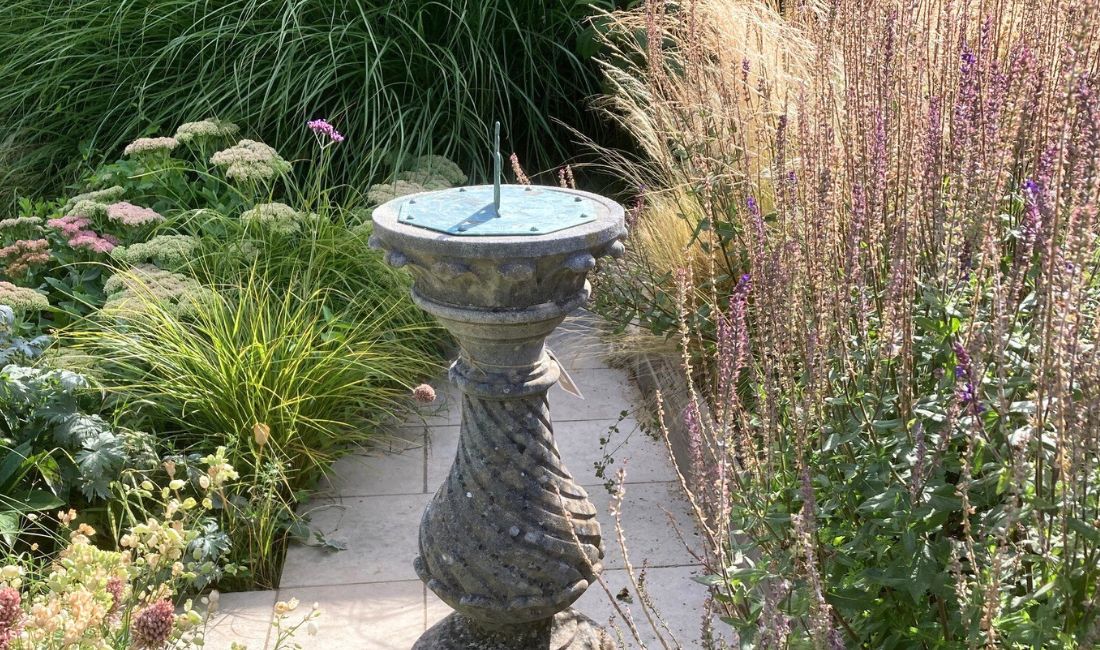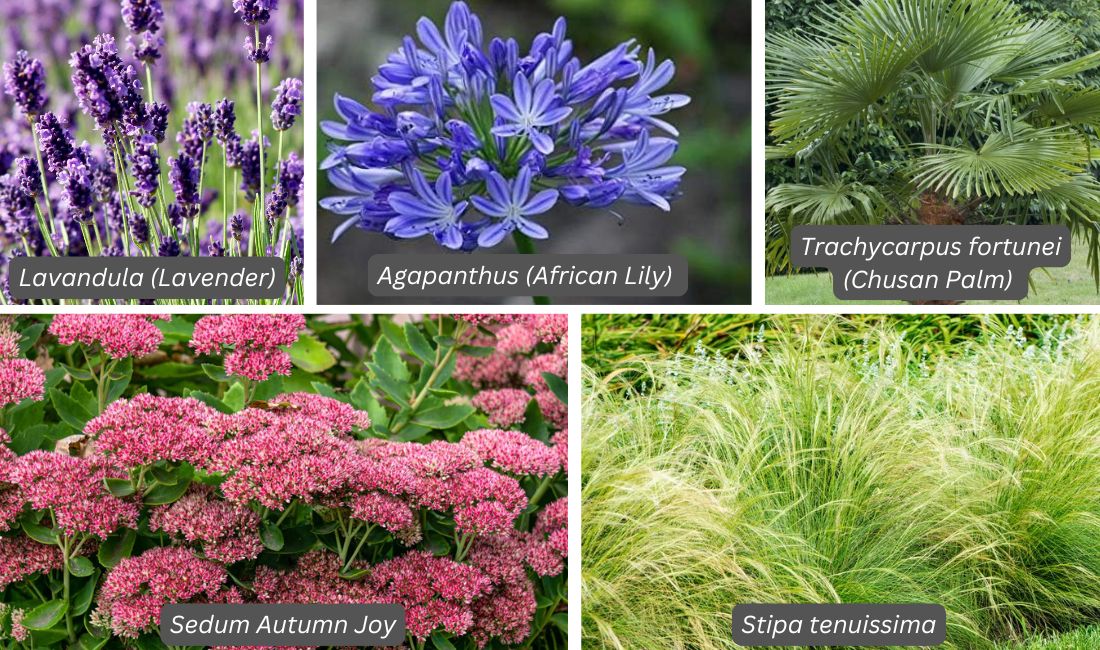
Drought tolerant plants, many of which are native to dry regions such as the Mediterranean, have evolved to thrive in areas with dry soils, little rainfall and sunshine.
Some drought tolerant plants (such as Lavenders) have silvery grey-green leaves as the lighter leaf colours reflect the rays of the sun. Others such as Stachys byzantina (Lamb’s Ears) not only have silvery-grey leaves but also a layer of fine (almost furry) hairs on their leaves, helping to trap moisture around the plant. Other adaptations of drought tolerant plants include waxy leaves for reducing transpiration (such as Bay), fleshy leaves for storing water (such as Sedum) and thin leaves for reducing the transpiration rate (such as ornamental grasses).
With climate change and extreme weather events such as drought increasingly likely in the UK, growing drought-resistant plants not only helps the planet by saving water but reduces your water bill too - and in the event of a hosepipe ban, your garden should still look attractive. Drought tolerant plants work well in low-maintenance planting schemes such as gravel gardens, and are also useful for growing in a sunny border with free-draining soil.
Caring for Drought Tolerant Plants
Being adapted for hot sunny conditions, the majority of drought tolerant plants require full sun and will not thrive in shade. In addition, they prefer well drained soil that does not get waterlogged, particularly in winter.
Although they’re drought tolerant, when first planting these plants it’s still worth improving the water-holding abilities of your soil by adding organic matter such as homemade compost or bags of SylvaGrow® Farmyard manure. This will act like a sponge, holding water in the soil. Mulching the soil around the plants with a layer of bark chippings, gravel or pebbles will also help to reduce moisture evaporation.
Even drought tolerant plants will need regular watering until they are established – and become drought tolerant only after they’ve had a chance to put down a good root system.
If you decide to water established drought tolerant plants in a period of dry weather (assuming any hosepipe regulations in force at the time allow this), water thoroughly and infrequently, rather than little and often, to encourage the roots to grow deeper in search of moisture.
As with most garden plants, we recommend feeding all drought tolerant plants in the spring with a general slow-release fertiliser.
Our Favourites
As there are numerous, attractive, often quite striking drought tolerant plants, it’s hard to pick our favourites but the following are ‘must-haves’.
Lavandula (Lavender) – no list of favourites is complete without the quintessential English lavender, much loved for its aromatic grey-green leaves, fragrant flowers and stunning good looks as well as its ability to cope in dry conditions. Many varieties are available, not just in shades of purple, but also in white and pink. Much appreciated by pollinators as well as humans! Prune after flowering to retain its shape.
Trachycarpus fortunei (Chusan Palm) – the hardiest palm commonly grown in the UK. Once established, is drought tolerant but in the hottest of summers would benefit from the occasional watering to keep the fronds looking fresh. Evergreen and architectural with striking palm fronds. Can grow tall (up to 15m) if planted in the ground in the right location.
Sedum (many of which are now known as Hylotephiums) – the upright varieties (such as Autumn Joy) have succulent leaves and flat heads with masses of small starry pink, ruby or white flowers in late summer and autumn. Some varieties also have coloured foliage which die,s back in winter, re-emerging again in spring. Particularly attractive to butterflies as well as bees and other insects. There are also many other lower growing Sedums with smaller leaves (in a range of colours) which are ideal for ground cover.
Stipa tenuissima (renamed recently as Nassella tenuissima) – a beautiful mid-height (60cm) wispy ornamental grass, with pale yellow-green leaves topped with feathery silver-green plumes. The soft foliage sways gracefully in the breeze, bringing movement to the garden. Tough and hardy, loves full sun and dry conditions. Self-seeds so ideal for planting up seedlings and sharing with your friends!
Agapanthus (African Lily) – originating from South Africa, once established, these spectacular plants thrive in sunny, well-drained conditions. Available in both deciduous and evergreen varieties, in a range of sizes, and with different flower colours including purple, white and pink. The striking flower heads are also ideal as cut flowers (if you can bear to remove them from the garden!). Suitable for containers as well as growing in the ground. Our friendly team are always happy to advise about which of the numerous varieties are suitable for your garden or outdoor space.

Clifton Nurseries Garden Centre
London, W9 2PH
Click here for our Christmas trading hours
0207 432 1867
Monday – Saturday 9am-5:30pm, Sunday 10.30am-4.30pm
Clifton Nurseries Garden Services
London, W9 2PX
